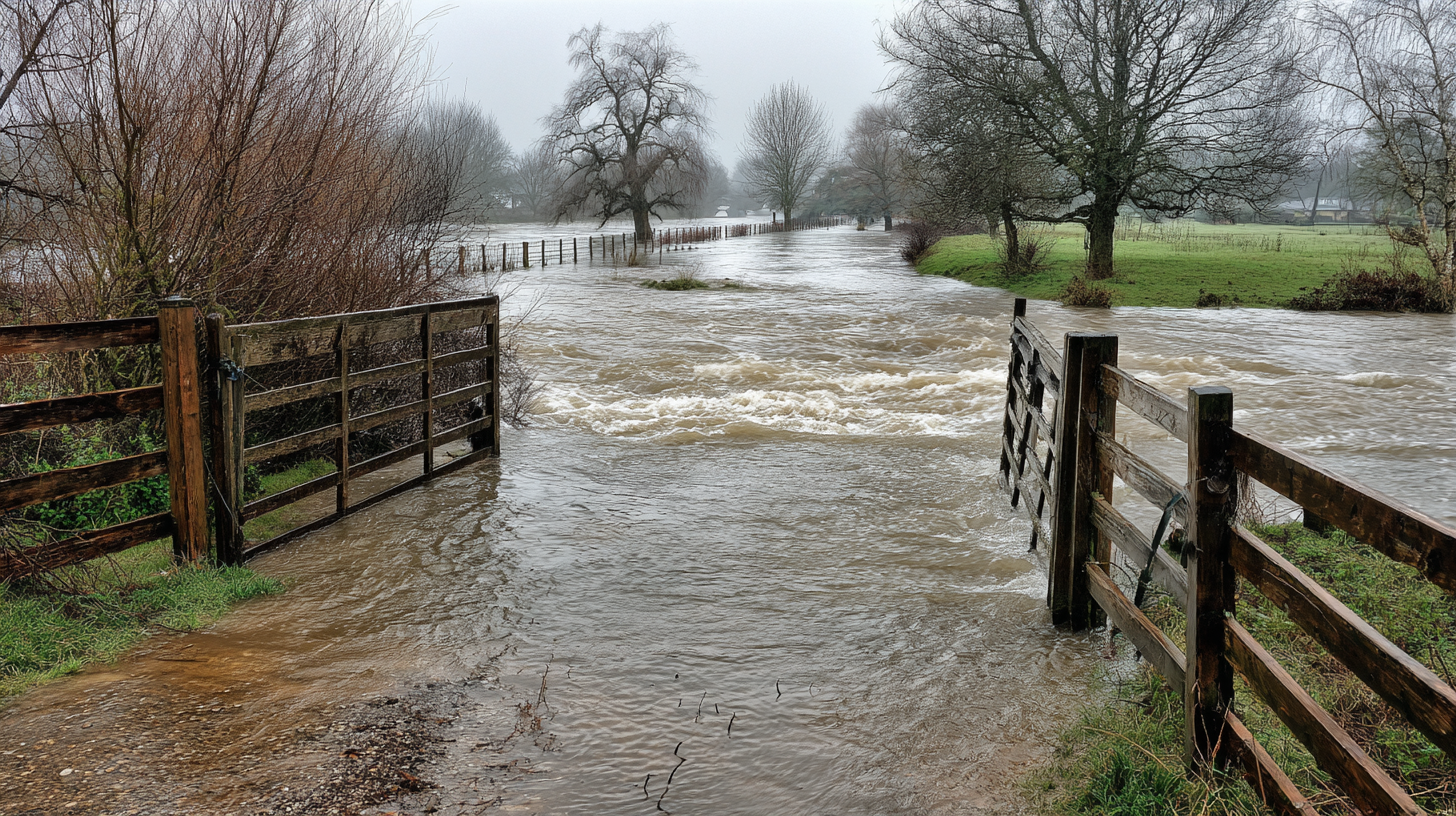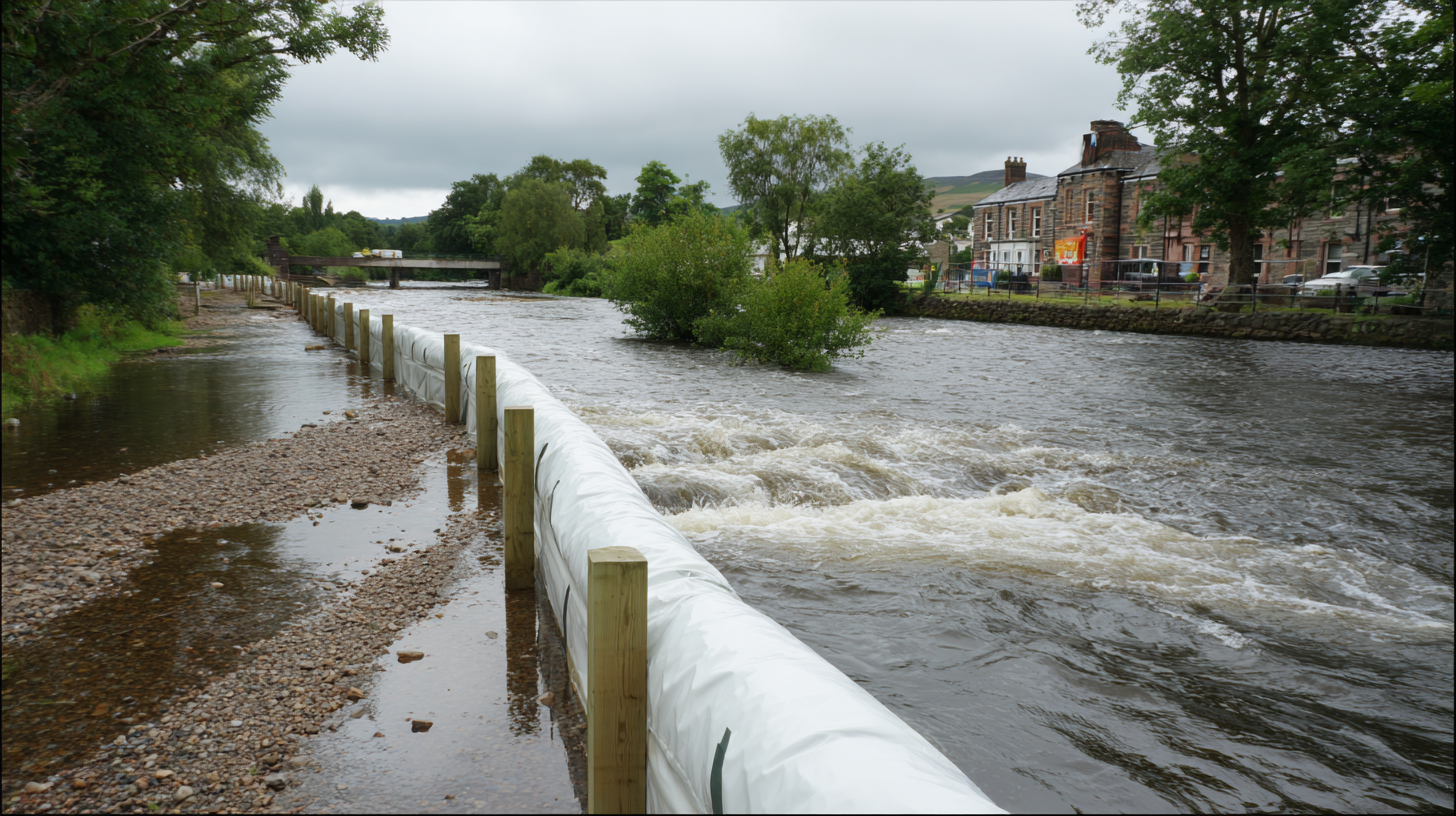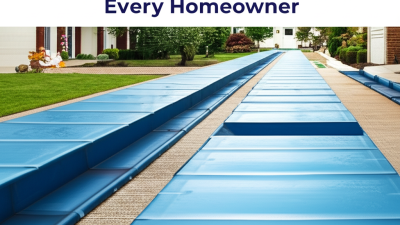Flooding poses a significant threat to urban infrastructure and ecosystems, with recent estimates suggesting that effective water management could mitigate these risks by up to 80%. According to a report by the National Oceanic and Atmospheric Administration (NOAA), flood-related damages in the U.S. alone totaled approximately $10 billion in recent years, underscoring the urgent need for innovative solutions. One of the most promising methods to combat this crisis is the installation of anti flood barriers, which serve as vital protective structures that can significantly limit the extent of flood damage. Research conducted by the International Flood Management Institute reveals that leveraging advanced anti flood barrier systems can not only protect communities but also contribute to long-term economic resilience. This comprehensive guide will explore the various types of anti flood barriers, their effectiveness, and how they can be integrated into sustainable water management strategies to safeguard our environments and economies from the devastating impacts of flooding.

Anti-flood barriers are essential structures designed to prevent water ingress and mitigate flood damage in vulnerable areas. There are several types of anti-flood barriers, each with unique functionalities tailored to specific environments. Temporary barriers, such as sandbags and inflatable dams, can be quickly deployed before a flood event, providing immediate protection. These barriers are especially useful for residential areas where rapid assembly is crucial. On the other hand, permanent barriers, such as flood walls and levees, are constructed to withstand long-term flooding and often integrate into the existing landscape, offering a more enduring solution.
The functionality of these barriers hinges on their ability to redirect water away from critical infrastructure. For instance, water-filled barriers utilize the weight of the water to create a solid defense against rising floodwaters. Other designs, like removable flood gates, allow for controlled access while still providing robust protection when closed. Understanding these various types and their operational mechanics is vital for effective water management strategies in flood-prone regions, as implementing the right barrier type can significantly lessen the impact of flooding and protect communities from devastation.
Implementing anti-flood barriers in urban areas presents numerous key benefits that can significantly enhance community resilience against flooding. One of the primary advantages is the remarkable reduction in flood damage, with studies showing that these barriers can cut potential damage by over over 80%. By acting as formidable physical barriers, they prevent water from infiltrating critical infrastructure, residential areas, and business districts, thereby safeguarding both the economy and the environment. This not only protects property but also saves municipalities from costly repairs and replacements, allowing them to allocate resources more effectively.
Additionally, the presence of anti-flood barriers fosters a sense of security among residents, encouraging community development and investment. When potential homeowners and businesses see that a city is proactively managing flood risks, they are more likely to invest in property and infrastructure, knowing that their investments are protected. This can lead to increased property values and a more vibrant economic landscape. Furthermore, anti-flood barriers can be aesthetically integrated into the urban environment, enhancing the beauty of cityscapes while providing essential protective functions.
The design and materials of anti-flood barriers play a crucial role in their effectiveness at mitigating flood damage. According to the Federal Emergency Management Agency (FEMA), improperly designed barriers can lead to structural failure, causing more harm than good. It is essential to utilize high-strength materials such as reinforced concrete, steel, and durable composites that can withstand significant water pressure and resist corrosion over time. For instance, a study by the National Institute of Building Sciences indicates that barriers constructed with advanced composite materials can reduce water penetration risk by up to 90%, demonstrating a clear advantage in flood-prone areas.
In addition to material selection, the design of the barriers must consider local flood dynamics. Each location presents unique challenges, including varying water levels, soil types, and potential debris flow during floods. The integration of hydraulic modeling in the design phase ensures that the barriers will function effectively under specific flood conditions. The American Society of Civil Engineers estimates that strategic barrier design can lower flood-related damage costs by approximately 80%, underscoring the importance of thoughtful engineering and material choice in flood management strategies.
Flood barriers have proven to be an essential element in effective water management across the globe. Countries like the Netherlands and Japan have successfully implemented advanced flood barrier systems that significantly mitigate flood damage. For instance, the Delta Works in the Netherlands is an engineering marvel designed to protect vulnerable areas from storm surges. By integrating movable barriers and strong seawalls, this system has reduced flood risk for millions, showcasing the effectiveness of properly planned flood defense mechanisms.

In another successful case, the city of Venice has adopted a series of barriers known as MOSE (Modulo Sperimentale Elettromeccanico), designed to protect against high tides and flooding. The project, though facing some challenges, aims to shield the historic city from rising water levels and increased storm activity. These examples illustrate the immense potential of flood barriers to not just protect infrastructure but also preserve cultural heritage.
Tips: When considering implementing flood barriers, assess the specific needs of your locality, including historical weather patterns and infrastructure vulnerability. Engaging with local communities during the planning phase ensures that the barriers meet both functional and aesthetic needs. Additionally, continuous monitoring and maintenance of the barriers post-installation is crucial for long-term effectiveness.
Regular maintenance and effective management of anti-flood barriers are crucial for ensuring their longevity and reliability in protecting communities from flood damage. According to the Flooding Mitigation Research Institute, properly maintained barriers can reduce flood damage by up to 80%. However, neglecting necessary upkeep can compromise their integrity. Routine inspections should include checking for structural integrity, identifying any erosion or wear, and ensuring that drainage systems are clear and functional. Reports indicate that barriers serviced at least twice a year have a 30% longer lifespan than those receiving no maintenance.





Please enter the details to download, thank you
Get in Touch With Us
Please enter the details to download, thank you
Please enter the details to download, thank you
Please enter the details to download, thank you
Please enter the details to download, thank you
Please enter the details to download, thank you
Please enter the details to download, thank you
Please enter the details to download, thank you
Please enter the details to download, thank you
Please enter the details to download, thank you
Please enter the details to download, thank you
Please enter the details to download, thank you
Please enter the details to download, thank you
Please enter the details to download, thank you
Please enter the details to download, thank you
Please enter the details to download, thank you
Please enter the details to download, thank you
Please enter the details to download, thank you
Please enter the details to download, thank you
Please enter the details to download, thank you
Please enter the details to download, thank you
Please enter the details to download, thank you
Please enter the details to download, thank you
Please enter the details to download, thank you
Please enter the details to download, thank you
Please enter the details to download, thank you
Please enter the details to download, thank you
Please enter the details to download, thank you
Please enter the details to download, thank you
Please enter the details to download, thank you
Please enter the details to download, thank you
Please enter the details to download, thank you
Please enter the details to download, thank you
Please enter the details to download, thank you
Please enter the details to download, thank you
Please enter the details to download, thank you
Please enter the details to download, thank you
Please enter the details to download, thank you
Please enter the details to download, thank you
Please enter the details to download, thank you
Please enter the details to download, thank you
Please enter the details to download, thank you
Please enter the details to download, thank you
Please enter the details to download, thank you
Please enter the details to download, thank you
Please enter the details to download, thank you
Please enter the details to download, thank you